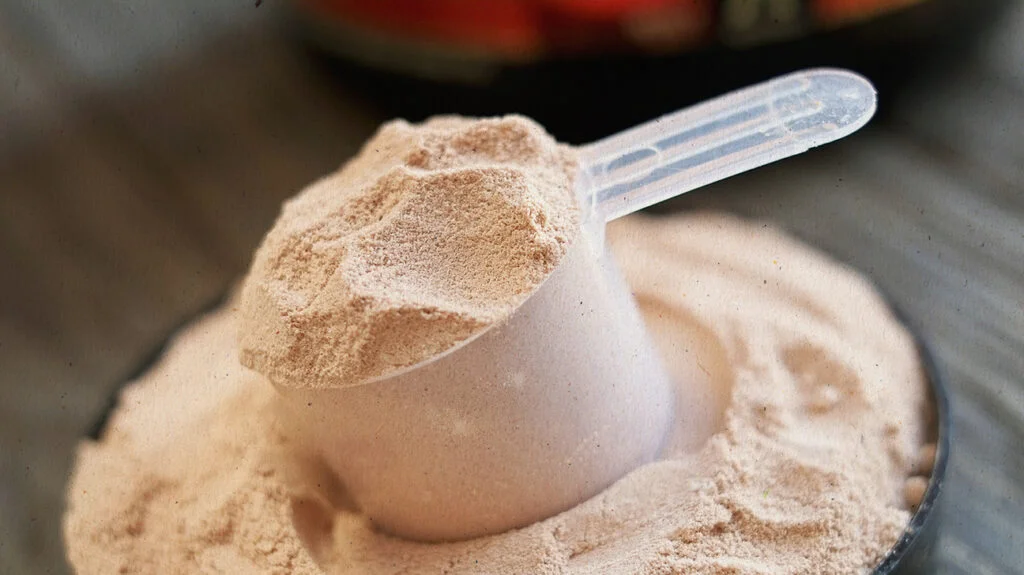How Many Different Types Of Creatine Are There?
If you know the word creatine, you probably aren’t a stranger to the world of sports and bodybuilding.
Why? Because creatine is famous for being the most effective and beneficial nutritional supplement. Many fitness-conscious people would know the outcome of taking creatine.
But apart from the benefits, what makes creatine even more interesting is its various forms. So if you are excited to look at the list, have little patience as we will first discuss some interesting creatine facts.
Facts about Creatine
It is no news that creatine, a natural molecule created from amino acids, is primarily produced inside human organs like the liver, kidneys, and pancreas.
The creatine is usually accumulated in the muscles. With the presence of powerful phosphate groups, it is first carried to ADP (adenosine triphosphate) then converted to ATP (adenosine triphosphate), the prime supplier of energy in the body.
In short, creatine acts as a vital source for releasing an immense quantity of energy for conducting both mental and physical activity.

Let us now look into some facts about creatine:
Supports muscle cells to release energy: By consuming creatine supplements, there is a rise in the accumulation of phosphocreatine which assists ATP to help muscle cells to release more energy since ATP drys output to rigorous activity.
Enhance performances: With creatine boosting the production of ATP, it upgrades the performance and refines other factors such as muscular tolerance, muscle recovery, functioning of the brain, force, resistance against exhaustion, and more.
Advancement in muscular operation: Creatine helps gain muscle mass and opens cellular pathways to increase muscle growth by forming proteins for improved muscle fibers.
It also boosts the levels of IGF-1, a hormone that encourages muscle mass to grow. Furthermore, it reduces myostatin levels, which is accountable for delaying the process of muscle growth.
Fights against diabetes and reduces sugar levels: Creatine boosts the operation of type 4 glucose transporter, which transports blood sugar to the muscles. With proper exercise and consumption of creatine supplements, the blood sugar is under control resulting in less risk of diabetes.
Reduce exhaustion and weariness: Studies found that people actively using creatine supplements accomplished 50% depletion to dizziness and increased energy levels during lack of sleep.
Boost brain function: The human brain needs a certain number of ATP for functioning, which is covered by creatine. It expands the quantity of phosphocreatine in the brain, leading to more ATP production, raising dopamine levels, and enhancing mitochondrial functionality.
Battles neurological diseases: Most of the causes of neurological illnesses are the decline of phosphocreatine in the brain.
Creatine lifts the phosphocreatine levels, which slows or reduces the advancement of the disease. Creatine supplements help treat neurological conditions like epilepsy, brain injuries, ischemic stroke, and Alzheimer’s disease.

Types of Creatine
There are different types of creatine in the market due to various chemical formulae involved used by manufacturers to allow solubility and enhance functionality. So let’s have a look:
Creatine Monohydrate
It is the most generic yet budget-friendly supplement in the market, creatine monohydrate, which comprises creatine and water molecules.
The supplement has been highly studied and screened and creates better physiological influence.
Creatine Monohydrate also involves micronized creatine which is mechanically clarified for finer solubility but produces similar effects. By consuming 3-10g of creatine monohydrate daily, you will grow muscle sizes, tolerance, and better performance.
Creatine magnesium chelate
Also known as MagnaPower®️, it is fabricated by magnesium which refines the performance of athletes but is not as effective as monohydrate.
Creatine citrate
It is the result of mixing organic citric acid with creatine which adds an organic taste to the supplement. Studies observed no significant contrast between monohydrate and citrate, although creatine citrate dissolves better.
Creatine hydrochloride
The supplement is a result of securing creatine to hydrochloride molecule, which is excellent for water solubility. According to studies, creatine hydrochloride dissolves 38 times more than creatine monohydrate and can absorb successfully in the body.
Buffered Creatine
Buffered creatine is a formation of creatine that somewhat consists of essential powder like bicarbonate.
The incorporation of buffer produces a bit of primary compound, which can minimize the creatine breakdown in the abdomen for better absorption in the muscles. It does great for athletes with stomach cramps.
Creatine ethyl ester
The creatine ethyl ester is enhanced by a natural element known as ester and claims to absorb better along with a longer life span than creatine monohydrate due to its ability to dissolve effortlessly in fats. But taking this supplement may lead to a low creatine ratio and high plasma concentrations. Hence, its use is not advisable.
Creatine malate
It is obligated to a natural acid in fruits called malic acid, which enhances anaerobic production, stamina, and effortlessly dissolves in water.
Creatine pyruvate
The production occurs by binding creatine with pyruvic acid and has a better tolerance than creatine citrate. Also, few studies projected that it is high on creatine content compared to creatine monohydrate.
Multi-component creatine
Combining various forms of creatine infused into one mixture carries the benefits and effects of all the types of creatine.
It is an excellent choice for people who aren’t decisive in choosing a specific supplement and are looking for multiple benefits like energy, outstanding performance, or muscle gain from one source.
Creatine gluconate
Another bound of creatine with a glucose molecule assumes better and effective absorption due to the presence of carbohydrate-enriched insulin in it.
Creatine nitrate
It is a new form of creatine bounded by both creatine and nitrate molecules with low doses, yet it gives effective performance.
Creatine Alpha-ketoglutarate
You may know it as AKG, a production of alpha-ketoglutaric acid with creatine which quickly absorbs in the intestine, preventing abdomen issues and diarrhea.
If you are confused about which creatine to choose, please remember that creatine monohydrate has the highest studies and evidence to back the claims.
Creatine is super-friendly for anyone with different dietary habits, including vegetarians and vegans who shouldn’t shy away. So ready for your creatine adventure?



